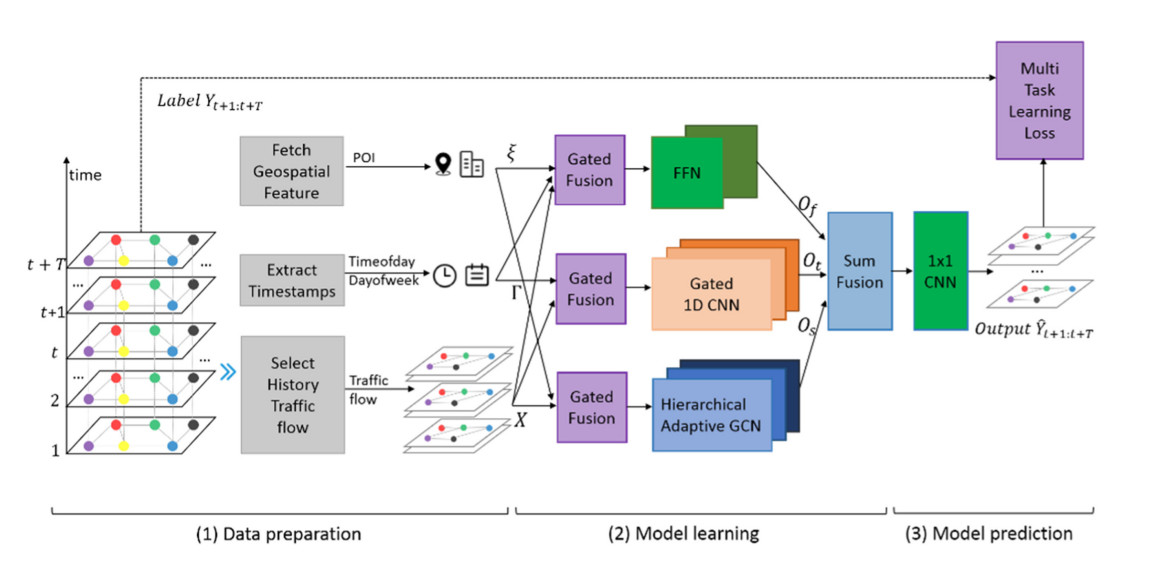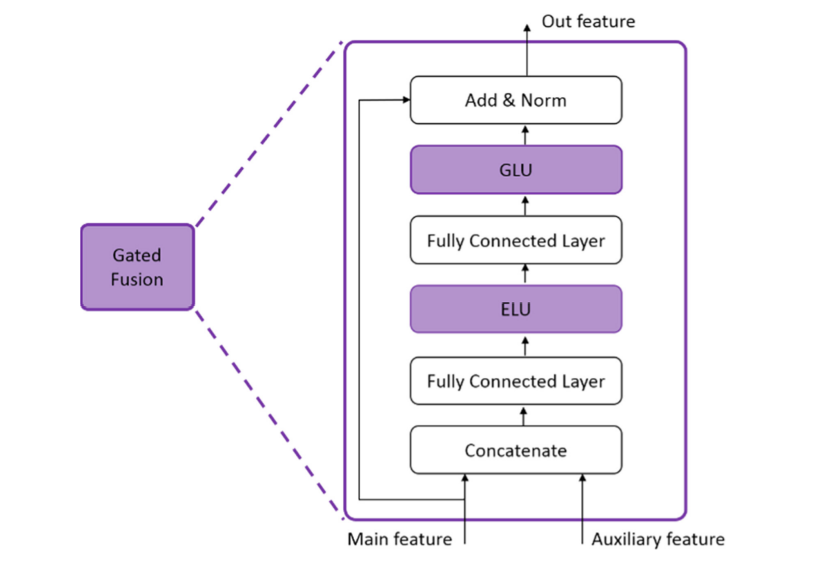我是靠谱客的博主 满意芹菜,这篇文章主要介绍《Traffic Flow Prediction Through the Fusion of Spatial-Temporal Data and Points of Interest》阅读,现在分享给大家,希望可以做个参考。
《Traffic Flow Prediction Through the Fusion of Spatial-Temporal Data and Points of Interest》: 先指出了三个问题:1:没有将历史交通流、时间、POI等多源因素很好的结合在一起2:用GNN的时候往往都是固定矩阵,然后固定矩阵不能很好的反应实时关系3:将进流量和出流量看成同个任务导致性能下降,看成两种任务性能会好一点,因为看成一种任务就忽视了流量序列之间的差异。
然后本文的主要解决方法是:1:设计了一种gated fusion network来融合交通流量、时间和POI。2:然后设计了一个hierarchical adaptive graph convolution network,在这个网络中邻接距离矩阵在不同维度都会变化3:然后把任务分为三类:进流量、出流量和总流量进行多任务学习。
网络结构如下:GCN处用的diffusion graph convolution(扩散卷积)

GNN网络结构如下:ELU( Exponential Linear Unit activation function)、GLU(Gated Linear Unit)

第二个block的网络结构:

最后
以上就是满意芹菜最近收集整理的关于《Traffic Flow Prediction Through the Fusion of Spatial-Temporal Data and Points of Interest》阅读的全部内容,更多相关《Traffic内容请搜索靠谱客的其他文章。
本图文内容来源于网友提供,作为学习参考使用,或来自网络收集整理,版权属于原作者所有。








发表评论 取消回复